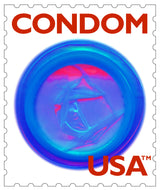

National Women and Girls HIV/AIDS Awareness Day is observed on March 10 to raise awareness about how women can protect themselves and their partners from HIV.
National Women and Girls HIV/AIDS Awareness Day is a time each year when organizations and communities across the country come together to help women and girls take action to protect themselves and their partners from HIV – through prevention, testing, and treatment. The observance is sponsored by the Office on Women’s Health of the U.S. Department of Health and Human Services.
HIV Among Women and Girls
HIV remains a significant health issue for women and girls, who comprised 23% (280,200) of the 1.2 million people living with HIV in the United States in 2011. In 2013, one out of five (9,278) of the estimated 47,165 new diagnoses of HIV infection were among women and girls over age 13. The majority of these diagnoses (87%) were attributed to heterosexual contact. While these numbers are still too high, the latest available data about HIV among women and girls show some encouraging trends. The rate of HIV diagnoses among adult and adolescent women decreased from 8.3 per 100,000 in 2009 to 6.9 per 100,000 in 2013, due in part to a 21% reduction in the number of HIV infections among African American women from 2008 through 2010.
African American and Hispanic/Latina women continue to be disproportionately affected by HIV. The rate of HIV infection among African American women remains the highest among all women — 19 times that of white women and almost 4 times that of Hispanic/Latina women.* African American women face a number of challenges that contribute to their higher rates of HIV infection. Among other factors, the greater number of people living with HIV (prevalence) in a community can increase the risk of HIV infection with each new sexual encounter.
Although most (88%) of women living with HIV in 2011 were aware of their infection, less than half of them (45%) were engaged in medical care. Even fewer were prescribed antiretroviral medicines to treat HIV (41%), and less than a third (32%) had achieved viral suppression. Antiretroviral therapy (ART) reduces the amount of virus (viral load) in blood and body fluids and can keep people with HIV healthy for many years, and greatly reduce the chance of transmitting HIV to sex partners if taken consistently and correctly. Testing, diagnosis, and achieving viral suppression through treatment are all essential to reducing new infections and improving the health of people with HIV.
*Hispanic/Latinos may be of any race.
What Puts Women and Girls at Risk?
- Having sex without a condom or other protection (i.e., HIV medicines like PrEP).
- Anal sex is the riskiest type of sex for HIV transmission.
- Ever having had sex without a condom or other protection with a male partner who also has sex with men.
- Using drugs or alcohol, which can lead to risky sexual behaviors.
- Being sexually abused may lead to difficulty in refusing unwanted sex, exchanging sex for drugs, or engaging in risky sexual behaviors.
- Having more than one sex partner increases the chance that you will have sex with someone who is infected with HIV or another STD.
The HIV Treatment Workscampaign shows how people living with HIV have overcome barriers to get in care and stay on treatment.
What Can Women Do?
- Get tested for HIV, alone or with your partner. To find a testing site near you, call 1-800-CDC-INFO (232-4636), go to http://gettested.cdc.gov/, or text your ZIP code to KNOW IT (566948). You can also buy a home testing kit online or at a pharmacy.
- If you have HIV, start treatment as soon as possible with HIV medicines (also known as antiretroviral therapy or ART), and stay on treatment. ART can lower the level of virus in your body enough to improve your health, prolong your life, and prevent you from spreading HIV to others.
- Get tested and treated for other STDs such as gonorrhea, syphilis, and chlamydia, and insist that your partners do too. Being infected with other STDs makes you more likely to get HIV.
- Choose not to have sex or choose to have sex with one partner and agree to be sexually active only with each other. Both of you should get tested for HIV, and share your test results before you decide to have sex.
- Choose less risky sexual behaviors. Anal sex, especially if you are the receptive partner, is the highest-risk sexual activity for getting HIV. Vaginal sex is much less risky, and oral sex carries much less risk than anal or vaginal sex
- Use latex male condoms or female condoms correctly every time you have anal or vaginal sex. Condoms are the only effective form of birth control that also helps reduce the risk of transmitting HIV and most other sexually transmitted diseases (STDs).
- Talk to your doctor about HIV medicines to prevent HIV infection (known as PrEP) if you routinely have sex with someone who has or may have HIV.
- See a doctor immediately if you have sex with someone who has or may have HIV, if you are not already taking PrEP. Starting medicine (known as PEP) within three days after a possible exposure reduces the chance of getting HIV.
- Limit the number of people you have sex with. The fewer partners you have, the less likely you are to have sex with someone who is infected with HIV.
- Don’t share injection drug equipment, such as needles, syringes, works, or anything that might bring you into contact with someone else's blood or bodily fluids.








Leave a comment